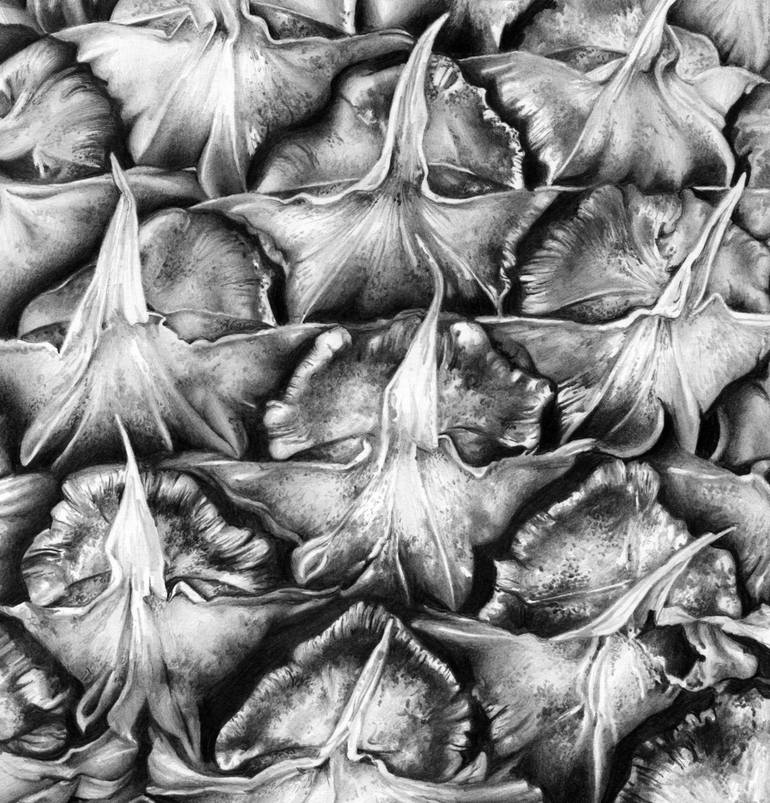When viewed from a distance, this play of light and shadow is interpreted as "texture" - it creates for us a surface that can be understood to be felt and affect a particular sensation of rough, smooth, spiky, soft, wet, sticky, gritty, sharp, etc.
When viewed up close, we can visible see those formal shifts in the surface, the surface topography, that catches light and casts shadows - the dips, the ridges, the grain or polish.
Think of a city: When viewed from a birds eye, the surface of the Earth is affected with the "texture" of buildings, roads, rivers, etc. When you are within the city itself, those "textures" are realized as the larger-than-self objects, themselves with surfaces that contain texture and topography.
If you were the size of an ant, or a gnat, how would surfaces that we humans see as merely "texture" appear to you? Would the be larger-than-self? Would they become landscape?
Try to view an object closely, with a strong influencing light source, to notice these "landscapes" made of form, depth, light, and shadow. Think of the surface topography, as we would with a cross-contour drawing of surface.
Using only shapes of light and dark, no line, construct a drawing that demonstrates a sense of the surface as space with all the considerations that you would make of an object still-life. Consider proportions and relationships, depth of space/field, scale and contrast of scale, light/dark, etc.
------------------------
Examples of enlarged surface drawings from the web:









NOTE The consideration for the various subtleties that can exist within a closely observed surface - the shapes and range of value, shifts in contrast and depth of space. Consider the light, consider the form, consider the surface of the object as an object within space.
Consider how topography is typically understood, and compare:


WE ARE DOING THE SAME THING
At a much smaller scale
No comments:
Post a Comment